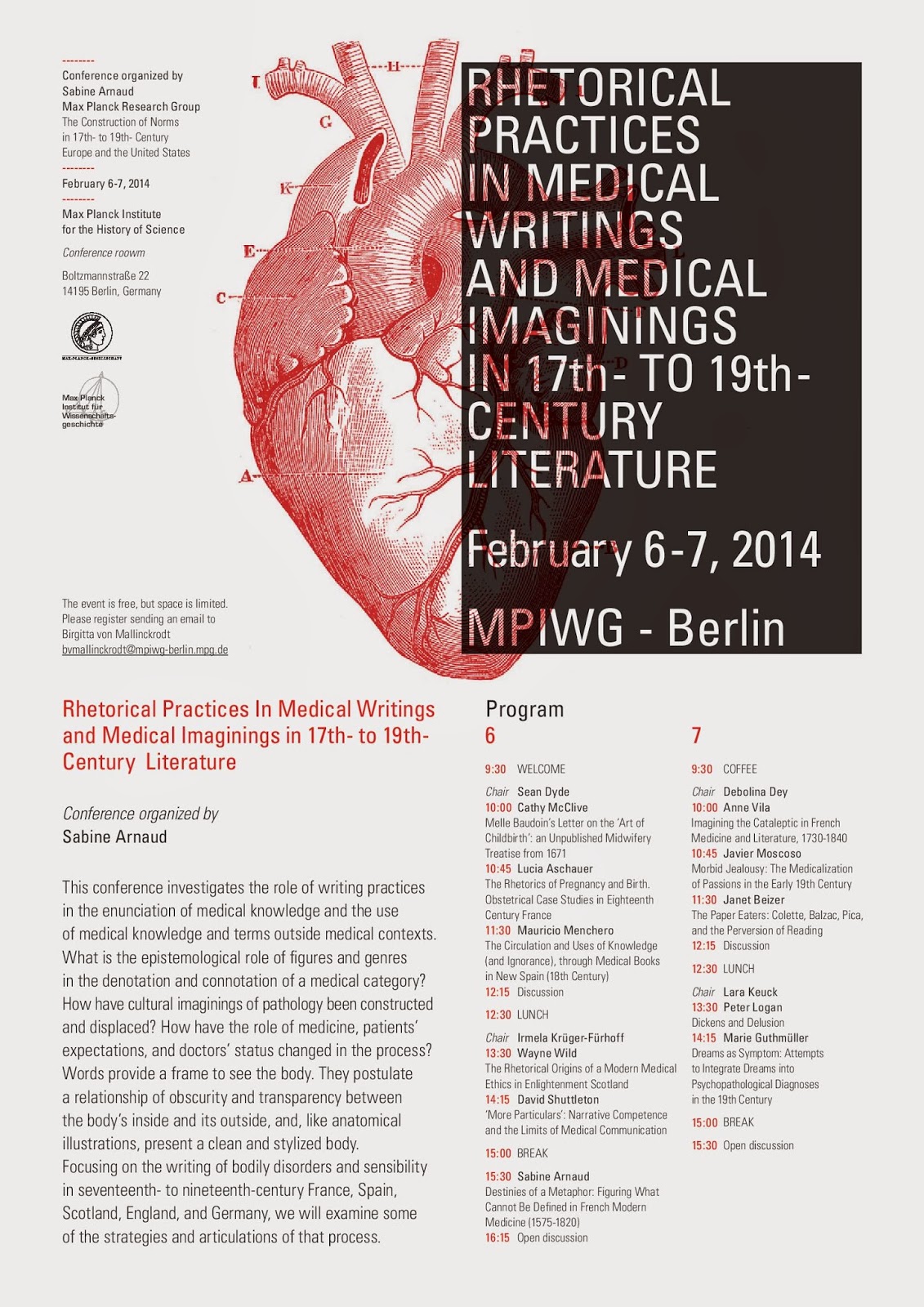Vision, observation, autopsie : le regard scientifique et ses mots à la Renaissance
Appel à communications
Brest, 20 mai 2014
La seconde journée se propose d’étudier le lexique scientifique attaché au regard dans les sciences : vision, observation, autopsie, et de mesurer quel est le sens précis que chacun (savant, homme de cabinet ou voyageur, médecin, naturaliste ou astronome…) donne aux mots qui décrivent le regard ou le rôle qu’ils lui confèrent dans la recherche. La perspective adoptée est toujours résolument interdisciplinaire, afin de comprendre quelle charge sémantique ces mots peuvent prendre selon qu’ils sont prononcés ou écrits dans un cadre scientifique ou philosophique, voire réinvestis dans des formes littéraires dont l’enjeu reste la divulgation de la science (poésie philosophique, astronomique, par exemple). Le naturaliste Pierre Belon est catégorique :combien que les aveugles puissent philosopher et contempler les choses, les pensant en leur esprit, si est-ce qu’il y a des choses en nature qu’il faut necessairement avoir veues pour en avoir la science. Ce faisant, il distingue deux voies de la connaissance : par l’esprit – c’est-à-dire par le raisonnement et l’intellect – et « par ce qui s’offre tout manifeste à noz sens ». Ces deux aspects complémentaires, par la pensée et l’usage de la raison d’une part, et par l’observation du réel d’autre part, semblent indissociables pour accéder à une saisie scientifique des objets que l’on étudie (« pour en avoir la science »). Il oppose ainsi deux figures majeures, Démocrite et Aristote : Démocrite, modèle dont il se détourne parce qu’il « se priva volontairement de la lumiere de ses yeulx, sans avoir aucune autre occasion évidente de ce faire, sinon que, se voulant delivrer des empeschemens qui adviennent à ceulx qui voyent clair, pensa que les discours qu’il pretendoit faire à son plaisir en seroyent plus hautains et exquis, et auroit son esprit plus à delivre, s’estant osté l’empeschement qui provient par la lumière des yeux » ; Aristote, au contraire, constitue une référence pour Belon, en ce que le philosophe grec parvient au plus haut degré de science en privilégiant la connaissance des faits de nature, ce qu’« il n’eust sçeu faire sans l’observation oculaire du naturel des animaux ».
À une époque où l’on ne se contente plus, dans les disciplines savantes, de la lecture des sources antiques, mais où celles-ci sont souvent passées au crible de l’observation personnelle in situ jugée toujours plus fiable qu’une connaissance reçue par « ouï-dire » , et où l’on n’hésite pas à effectuer de longs voyages pour se rendre compte « par soi-même » et « au vif » des réalités que l’on souhaite étudier ou que l’on est chargé d’observer pour le compte d’un roi ou des premières institutions et collections, les mots qui définissent le regard du savant ou du curieux sont amenés à jouer un rôle crucial, non seulement pour « dire » mais pour permettre à celui qui n’a pas vu de partager ce savoir et de l’acquérir par les mots (innutrire disait Montaigne).
On s’attachera donc à en comprendre le ou les sens des différents mots liés au regard selon leur contexte d’apparition, que ce soit dans les récits de voyages, les ouvrages de médecine, les traités d’astronomie, de botanique, de zoologie et plus généralement tout ouvrage lié à l’exposé textuel de la science. Il importera également de s’interroger sur la manière dont ces termes, qui impliquent des méthodes nouvelles, bousculent les hiérarchies existantes dans les techniques des savants autant que dans la révérence due aux catégories antiques, et prennent une valeur opératoire pour remettre en question la notion même de vérité, d’une manière dont nous sommes aujourd’hui sans doute les héritiers. Elles engagent en effet de nouvelles pratiques savantes, et engendrent de nouveaux lieux pour l’exercice des savoirs (amphithéâtre, laboratoires, cabinets…), dans lesquels le rôle du regard est essentiel, ainsi que de nouveaux publics. On devra vérifier si l’évolution de ces mots a en outre des conséquences sur la conception du livre, si d’une part, le statut de l’illustration, ses techniques et sa valeur de représentation du réel vont en être modifiés, et d’autre part, sur quelles bases réelles de l’observation, des genres que la critique a longtemps présentés comme nouveaux, tel le genre des Observationes en médecine, sont fondés. Apprendre, savoir, ainsi, ne vont pas sans voir, aussi vrai que Pantagruel, qui manifeste un « appétit strident » de savoir, est dit « desyrant tous jours veoir et tous jours apprendre ». Les découvertes et les évolutions scientifiques de la Renaissance semblent particulièrement liées à la question de l’observation, et de la diffusion des images qui en sont issues.
Les propositions de communication pourront donc porter sur des questions attachées au texte aussi bien qu’à l’image, quand cette dernière entre dans le cadre précis d’une controverse savante liée à l’observation ou pour définir l’organe et le mécanisme (traités d’optique) de la vision. L’étude du lexique de la vision chez un auteur précis peut être envisagée, afin de faire ressortir la variété et la complémentarité des mots et de leurs développements sémantiques, comme on pourra évoquer des contextes lexicologiques plus larges, en diachronie par exemple, pour mesurer les évolutions perceptibles de la langue latine à la langue et aux usages vernaculaires, ou en comparant l’usage d’un même mot chez plusieurs auteurs, dans plusieurs disciplines ou dans des dictionnaires. Il sera bon de s’interroger sur les conceptions du regard qu’impliquent la charge notionnelle des mots qui le désignent, en particulier les différentes manières selon lesquelles la vision est considérée comme voie d’accès aux savoirs, ainsi que dans son articulation avec la notion de représentation (« portrait », « arrangement », « description », « au naturel », « au vif »…), ces quelques suggestions n’ayant rien d’exhaustif.








.jpg)







